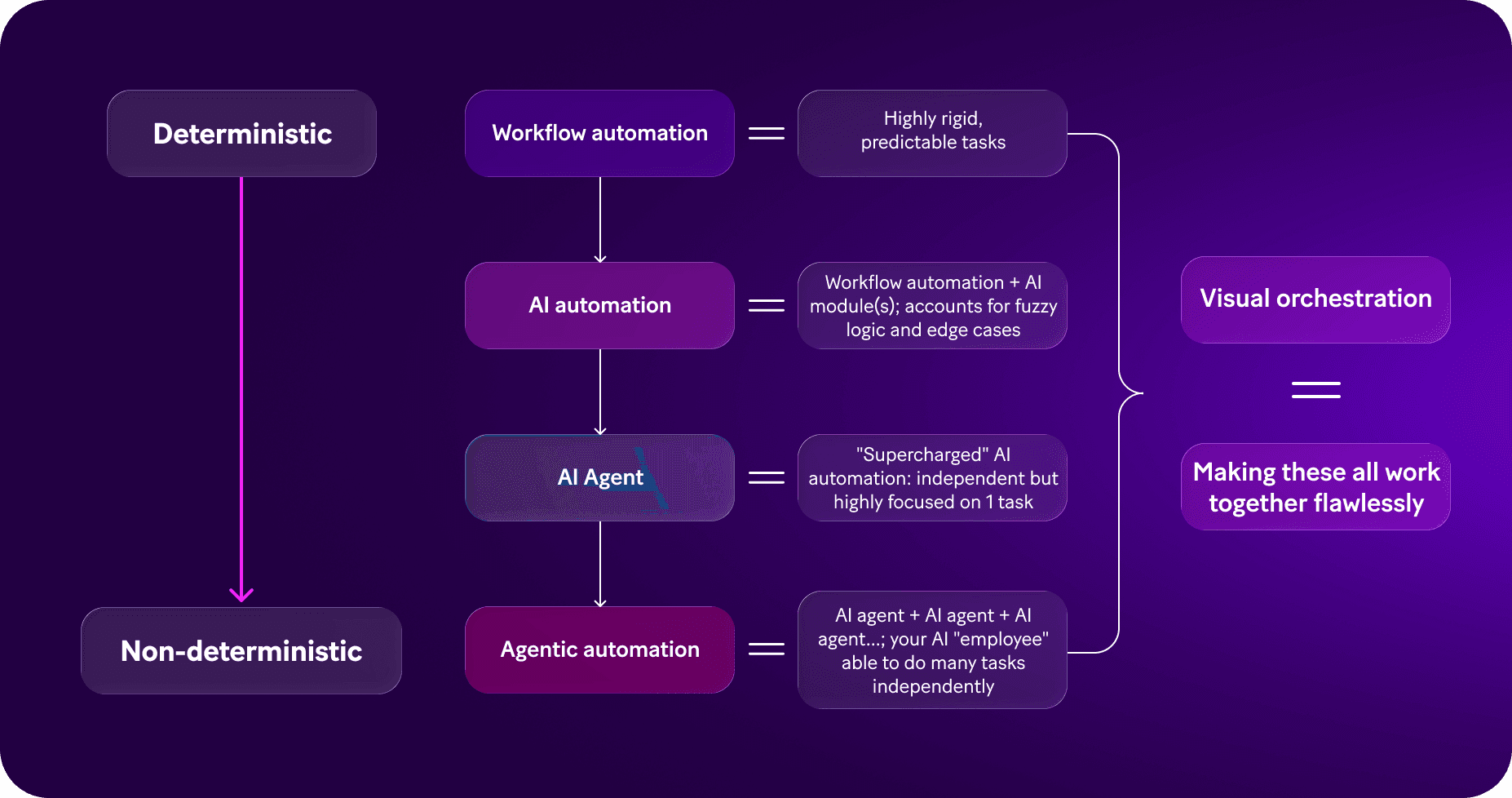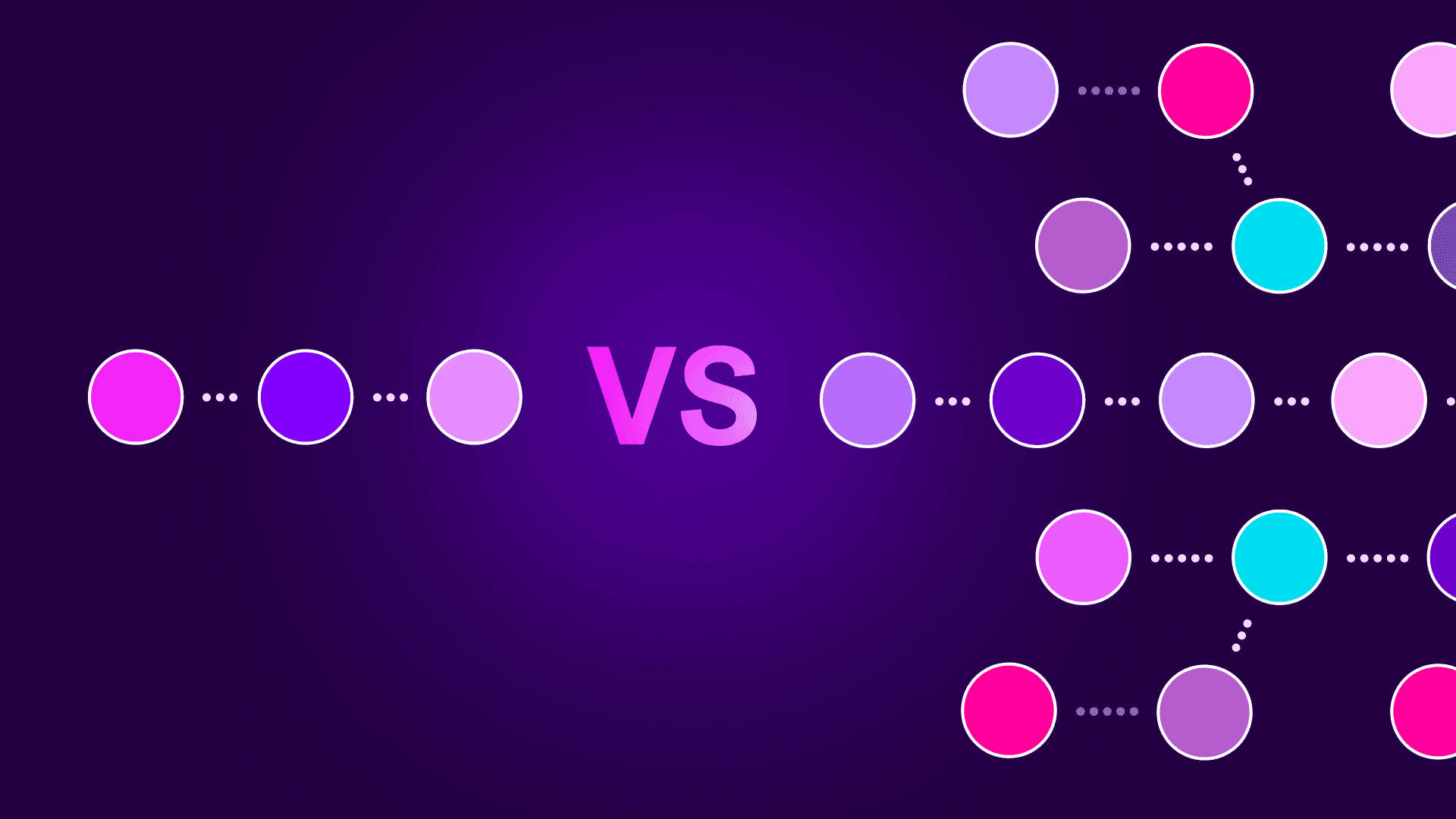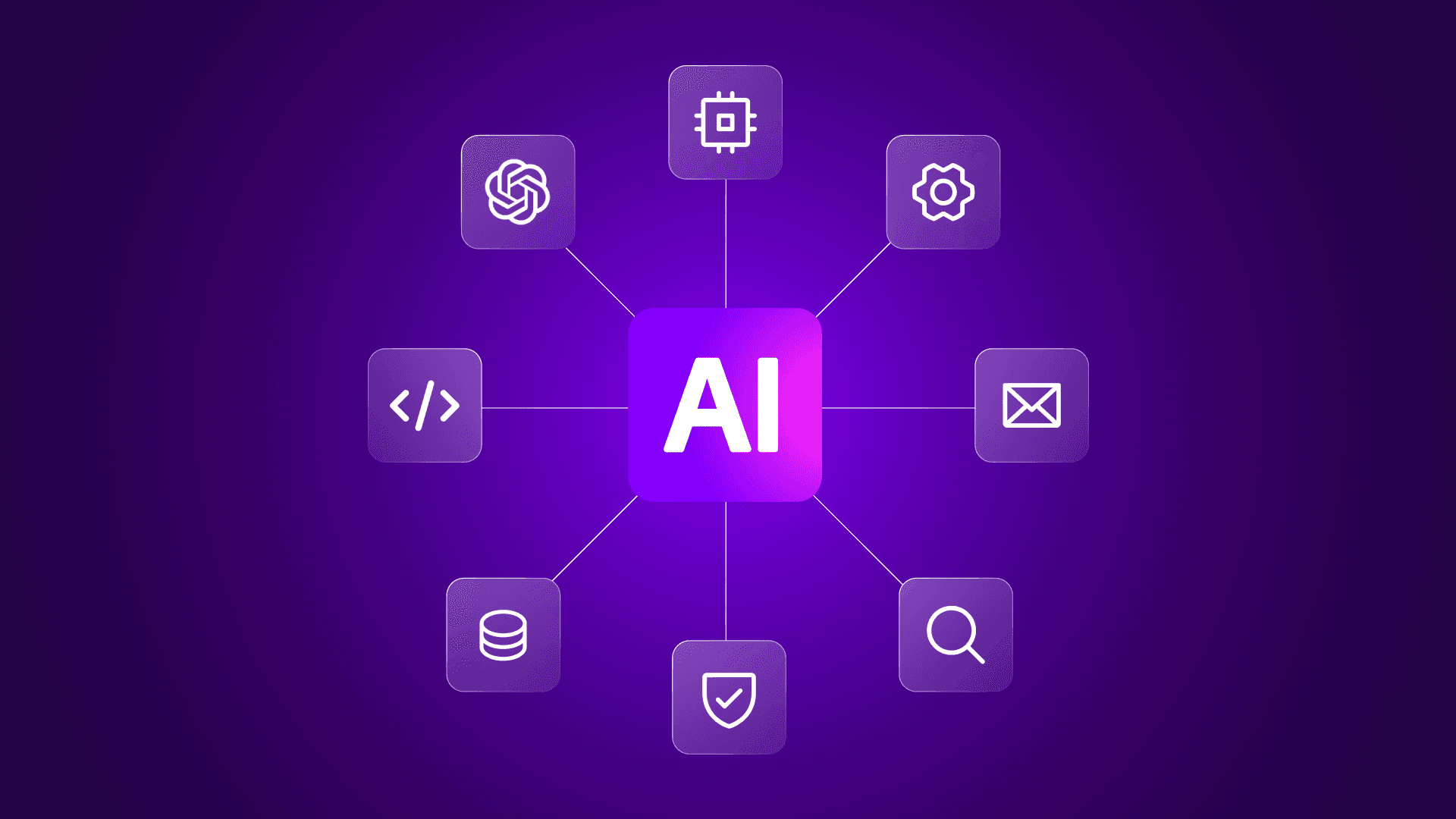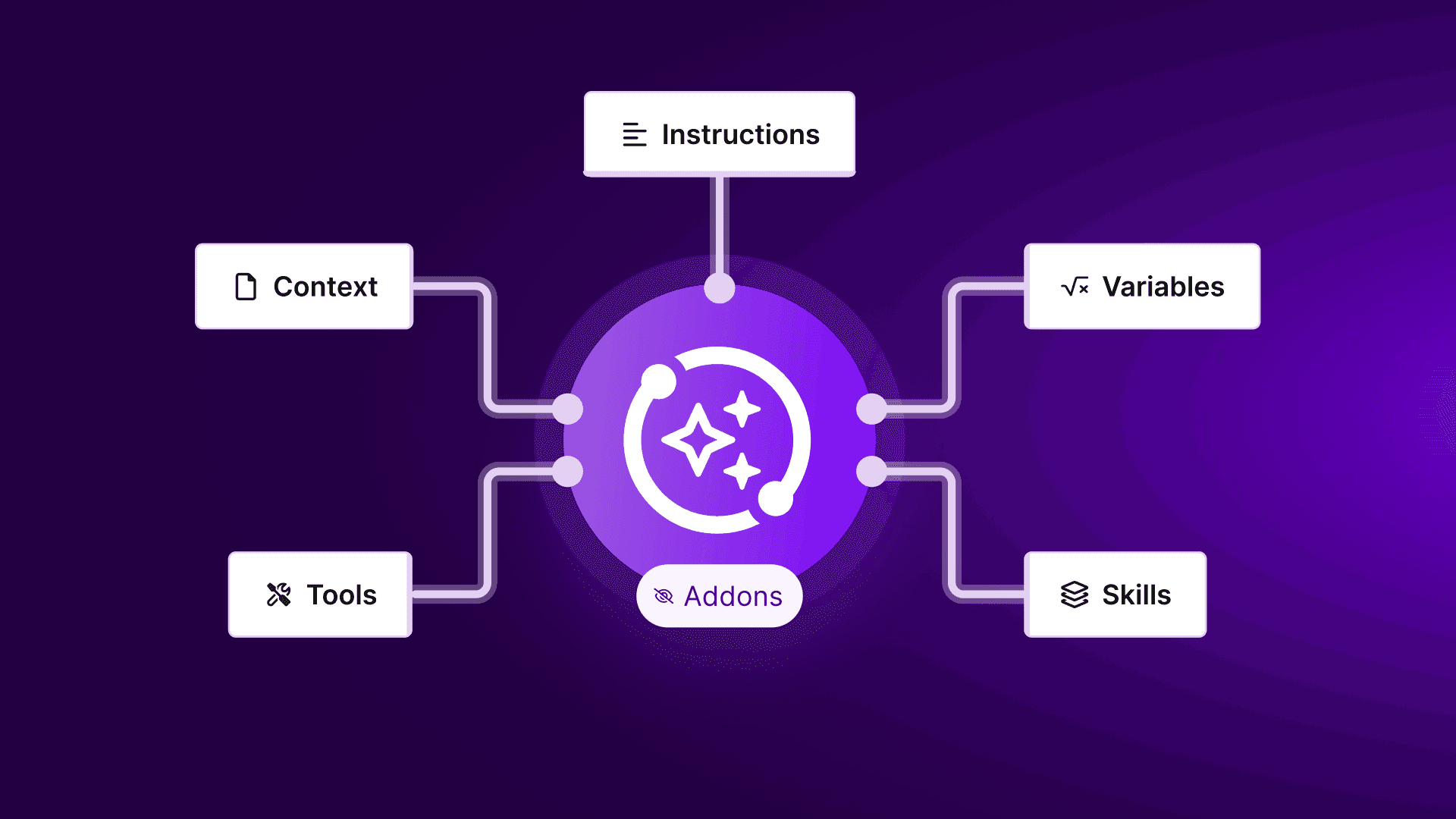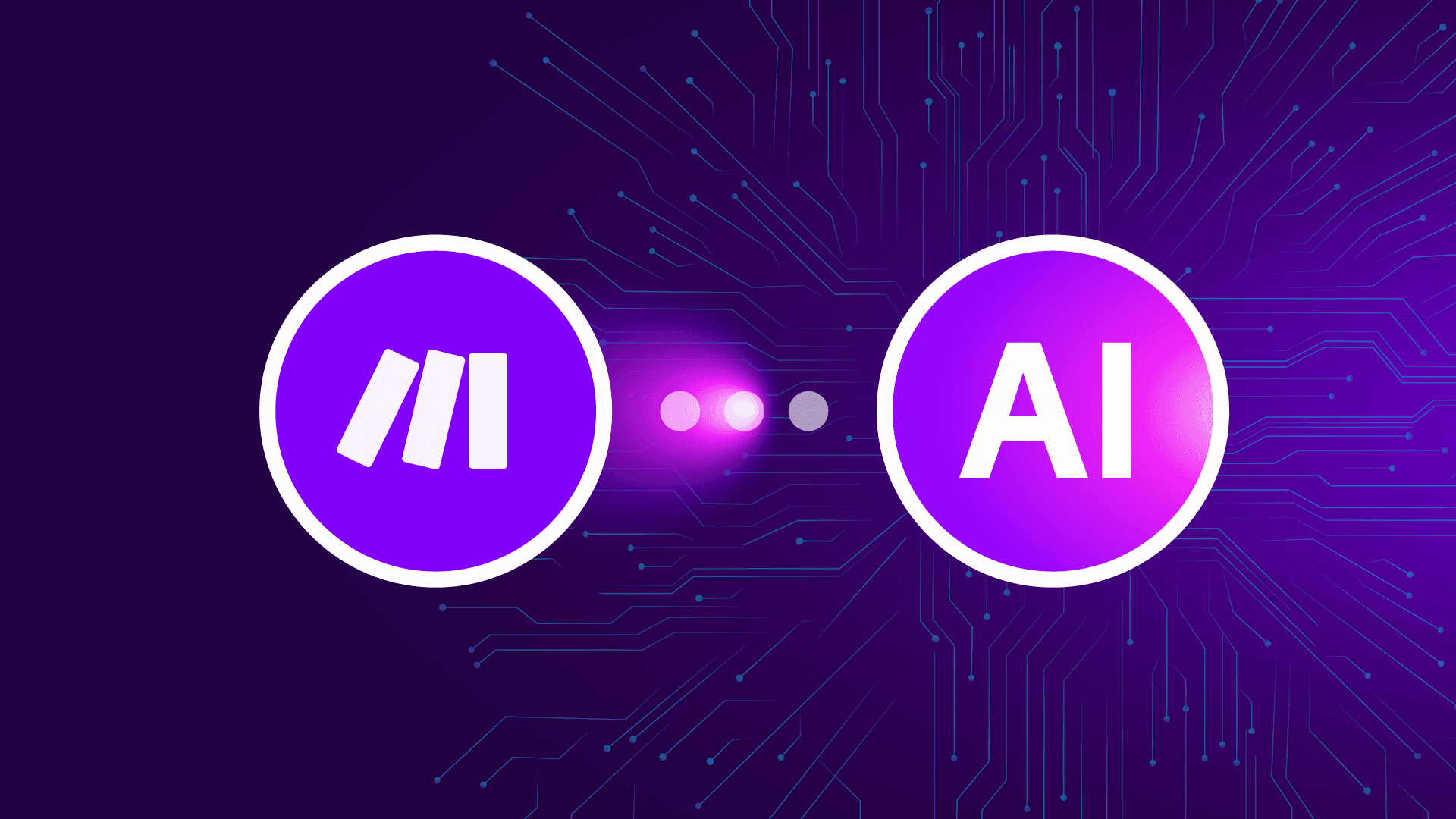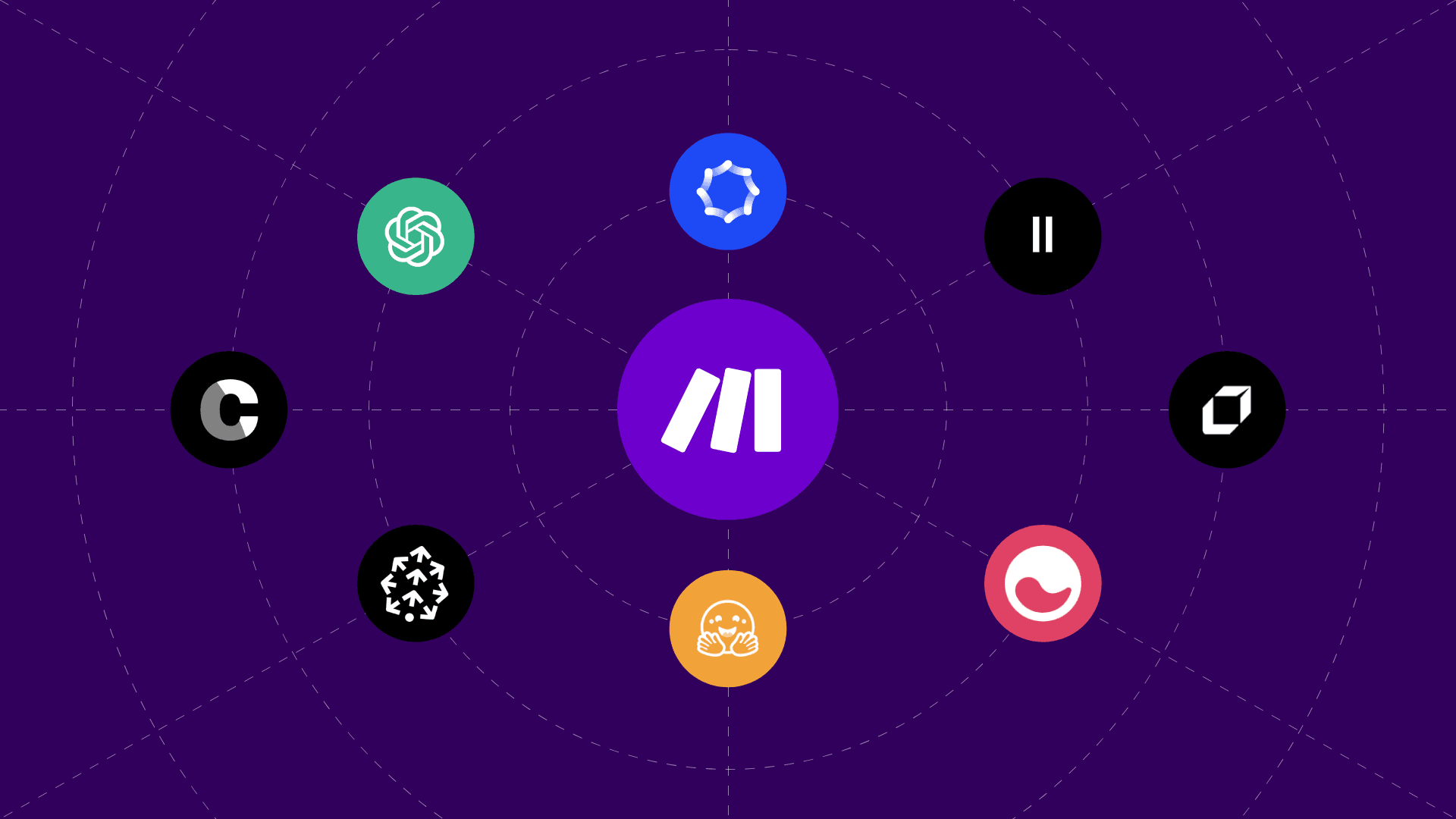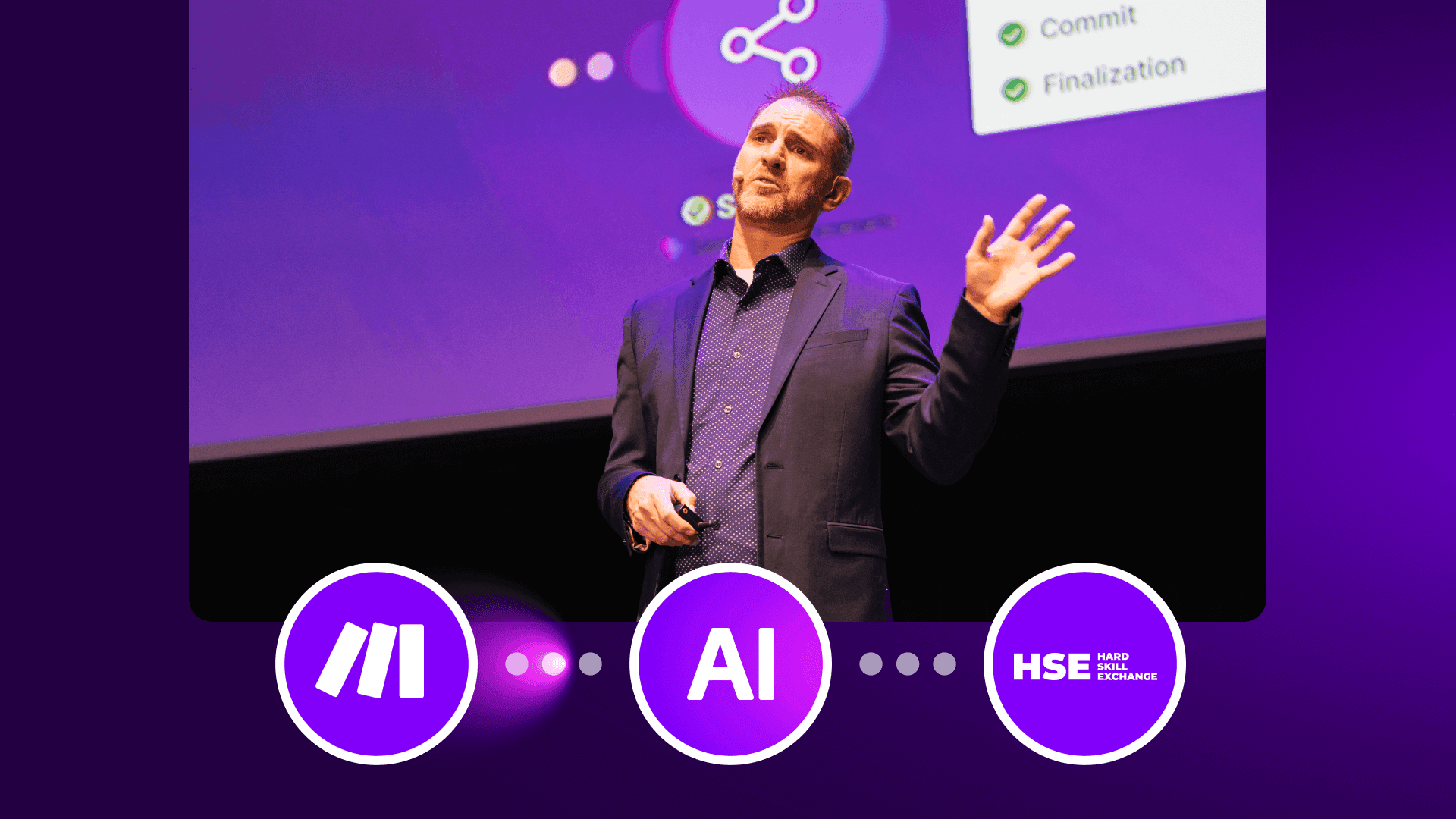Aug 22, 2025 | 6 minutes
The difference between AI agents and agentic automation
Agentic automation and AI agents are terms that are often used interchangeably. But they are distinct - and describe specific stages of AI progress.
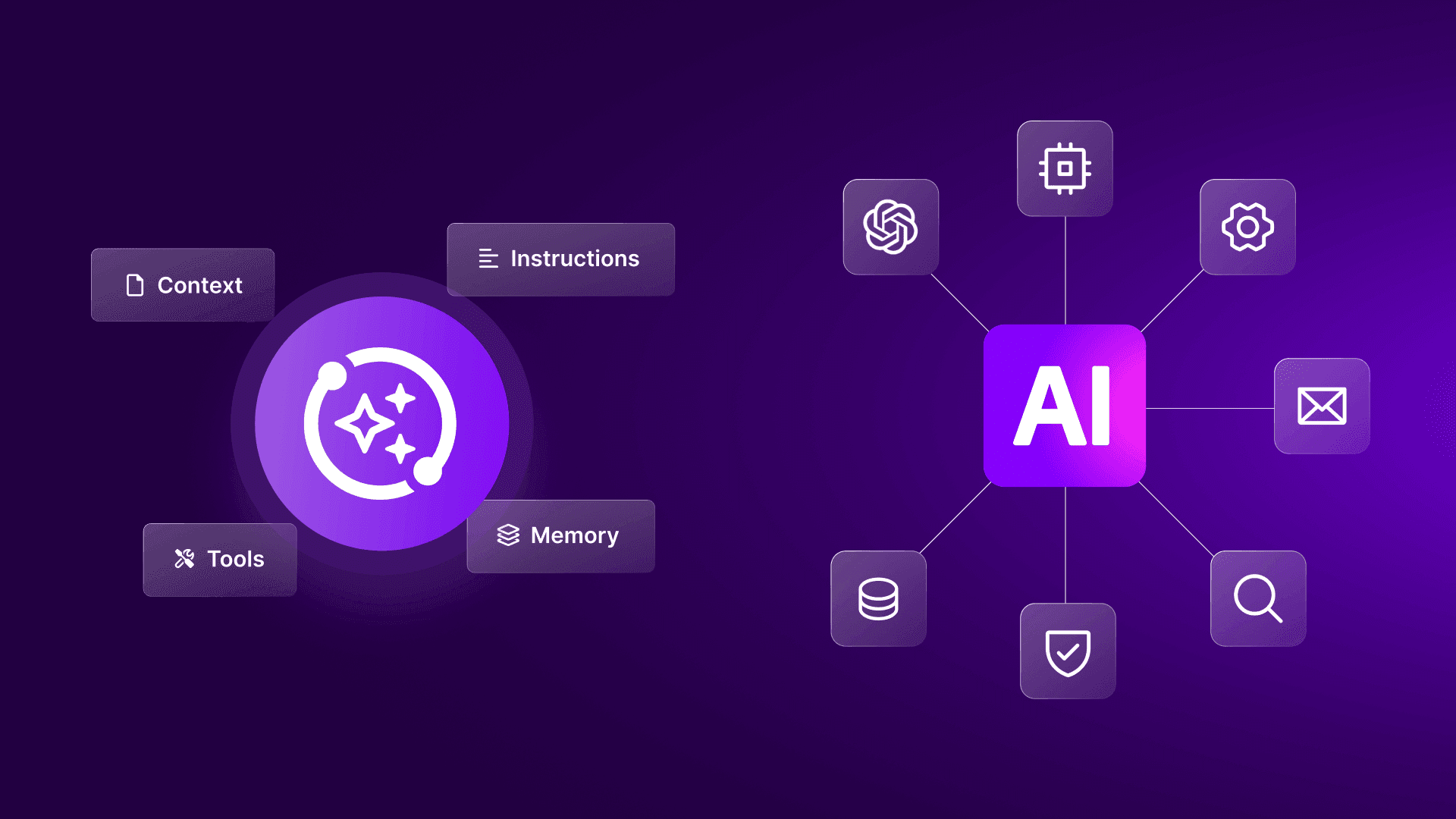
If you’ve ever used the terms “AI agent” and “agentic automation” interchangeably, you’re probably not alone. Over the past couple of years, the vocabulary around AI has exploded and the lines between these two concepts have understandably become somewhat blurred. However, agentic automation and AI agents aren't the same. They’re distinct terms that describe different things. As AI continues to evolve at pace, it’s worth taking a moment to understand these terms clearly.
In this article, we’ll explain what each one means, where they overlap, and where they diverge. We’ll also show how they fit into the broader landscape of AI and automation – and why knowing the difference can help you match the right tools to the right problems and design more strategic AI workflows.
What is an AI agent?
An AI agent is an assistant that combines automation with limited decision-making, problem-solving, and real-time interaction with its environment. It can analyze what’s happening, adapt to changes, and decide on the best next step – but it’s built to focus on a fairly specific task.
According to Sara Maldon, Make’s Head of AI and Business Automation, an AI agent typically combines three elements:
A large language model (LLM): To process and generate language
Context: Data the agent can reference when making decisions
Tools: That let it take action, from simple calculations to sending emails or booking meetings
Sara says:
What makes an AI agent special is that it’s goal-oriented. An agent has some kind of goal that you define, and then is able to execute on it, because it has those tools, it has a kind of ‘brain,’ and it has context.
In this clip from the recent RAISE Summit in Paris, Sara also stresses what AI agents are not. They’re not simply "AI automations" or traditional workflows with a model bolted on. While those systems might use LLMs, data, and tools, they don’t necessarily operate with the defined goal-driven autonomy that characterizes an AI agent.
Find out more about Make AI Agents
What is agentic automation?
Agentic automation takes the capabilities of individual AI agents and scales them into an "army" of assistants.
Instead of one agent working toward a single, narrow goal, you have dozens – or even hundreds – working at once. Each can make decisions, act independently, and collaborate with others to achieve broader, more complex objectives.
Think of agentic automation as AI with agency – not just carrying out tasks, but functioning more like a full-fledged AI employee, or even an entire team. These agents coordinate across processes, departments, and systems, tackling a wide range of tasks, adapting to change, and delivering outcomes no single agent could achieve alone.
Agentic automation vs AI agents
While the terms are related, they describe different levels of scope and complexity. Here are some key differences:
Scale: An AI agent focuses on one fairly specific task. Agentic automation uses many agents to achieve much broader goals.
Goal: An AI agent is defined by a single, goal-oriented function. Agentic automation pursues multiple goals, often across different processes or departments.
Autonomy: An AI agent makes decisions within its assigned task. In agentic automation, decision-making is distributed across a network of agents.
Coordination: An AI agent works independently. In agentic automation, agents coordinate and share information to progress toward a shared outcome.
Output: An AI agent delivers a result for one process. Agentic automation delivers results that no single agent could achieve alone.
How we got here
The shift from rule-based workflows to agentic automation didn’t happen overnight. It’s the result of years of experimentation, new technologies, and changing expectations about what automation can do. Here’s how it’s unfolded:
Rule-based automation. The first wave of automation relied on strict ‘if this, then that’ rules. It was predictable but inflexible – any change in process or logic required manual input.
Nondeterministic automation. The introduction of AI models meant workflows could adapt on the fly, respond to new inputs, and make decisions that weren’t pre-programmed. This shift removed the need for every possible outcome to be coded in advance.
AI agents. Building on that adaptability, AI agents combined an LLM, context, and tools to pursue specific goals autonomously. They could decide the best way to reach a defined outcome without constant human input.
Agentic automation. The latest stage connects multiple AI agents into coordinated networks. Together, they can handle dozens or even hundreds of tasks in pursuit of broader objectives, acting more like an AI-powered workforce than a single process.
Here’s how these stages build on each other – from rigid, rule-based workflows to adaptable AI agents, and finally to agentic automation, where many agents work together as a coordinated team.
Each stage has expanded what automation can do – bringing new opportunities (and challenges) with it.
Benefits
AI agents
Handle specific tasks without constant supervision.
Adapt to changing inputs and adjust their actions in real time.
Reduce manual effort for repetitive, rules-based, or predictable processes.
Provide a building block for scaling toward agentic automation.
Agentic automation
Run multiple processes at once – across teams, departments, and systems.
Distribute decision-making so tasks progress without bottlenecks.
Deliver complex, multi-step outcomes that would be slow or costly to achieve manually.
Create flexibility by allowing agents to work independently while sharing information to reach shared goals.
Risks and challenges
Challenges with AI agents
Limited scope: Each agent is focused on one specific goal.
Quality control: Outputs still need review to avoid errors or irrelevant results. Make’s visual, no-code Scenario Builder makes it easy to see and adjust each step, so you can refine agent behavior without digging into code.
Integration gaps: The agent may not connect seamlessly with every tool, system, or dataset you use. Make’s library of 2,800+ pre-built apps gives agents more connection points without the need for complex custom development.
Challenges with agentic automation
Coordination complexity: Managing dozens or hundreds of agents so they work together toward a shared outcome.
Risk of conflicting actions: Without orchestration, agents may duplicate work and drive up costs or undermine each other’s progress.
Higher maintenance: More agents mean more configuration, monitoring, and fine-tuning over time.
Data and compliance: Multiple agents acting independently still need to follow your security and privacy rules.
Make Grid helps tackle this complexity by giving you a single, visual map of your automation landscape – showing how agents, workflows, and data flows connect, so you can coordinate them more effectively, spot potential issues, and make large-scale changes with confidence.
Ready to explore AI agents?
Sign up for a free Make account or talk to our team to start building today.

